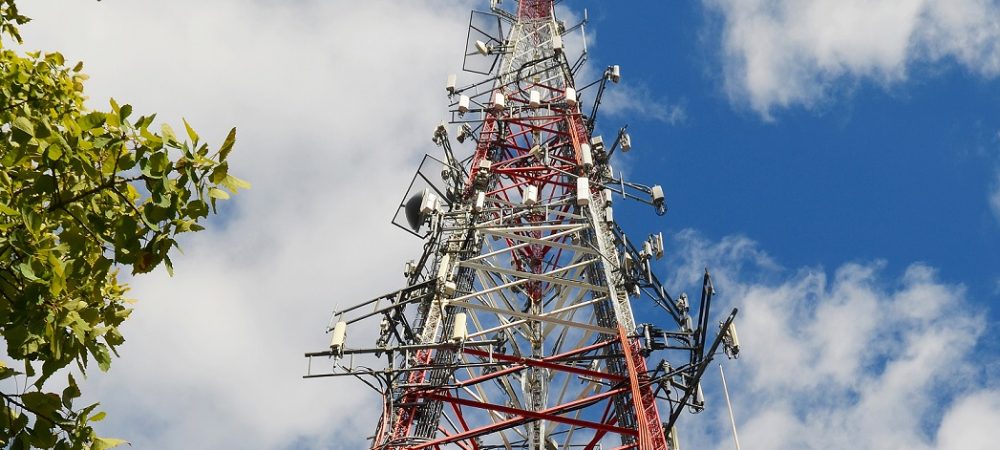With an upsurge in demand and the growth of IoT devices, American Tower is experiencingthe beginning of a boom that is expected to continue throughout the decade.
American Tower is recognized in the telecommunications market as a leader in terms of mobile telecommunications towers.
From this angle, its purpose is to establish a clear understanding of how to operate the various communication models existing in the global market, different in all countries, but with a common objective, which is to offer the best possible signal for users of mobile communication systems.
In addition to leasing space in wireless and signal in transmission towers, American Tower offers colocation solutions tailored to the demands of its customers, through indoor systems, outdoor distributed antenna systems, and other right-of-use options, rooftops, managed services and services that accelerate the network colocation process.
American Tower business operates in the United States, where it is based in Boston, Massachusetts, and in other countries including Germany, Argentina, Brazil, Chile, Colombia, Costa Rica, France, Ghana, India, Kenya, Mexico, Nigeria, Paraguay, Peru, South Africa and Uganda.
Investments and growing market
And this is just the beginning of a boom that is expected to continue throughout the decade.
Specifically and as an example, consumers in the US will go from an average consumption of 15GB per month this year, to more than 50GB in 2026, with a compound growth rate, CAGR, of 30%.
Other regions, such as Latin America, also present interesting figures in demand growth, with a CAGR of 7.4% between 2020 and 2021, according to Rod Smith, Vice President of Operations at American Towers.
The business outlook in this region, as well as in Europe and Africa, also changes as the acquisition of Telxius Towers from Telefónica allows a gain in markets such as Argentina, Brazil, Chile and Peru. The deal was closed in June of this year and reached US$1.1 billion for the 7,000 towers in Latin America.
The towers evolve
The Internet of Things, IoT, becomes the axis of this trend if we take into account the growth forecasted by American Tower in both the number of connected devices and bandwidth per user.
According to American Towers, the growth of IoT devices will go from US$155 million in 2020 to US$426 million in 2026.
The transmission towers will also be affected by the transition from 3G and 4G to 5G as it will go from simple equipment connected to SISO antennas coupled by a coaxial cable to the 3G base station that includes the baseband unit, the transceivers, the amplifiers and other auxiliary equipment, to a more specialized connection, made up of MIMO multiband antennas, based on 2X2 MIMO that have already become common thanks to LTE but which will go to 4×2 and then 4×4, thus obtaining greater efficiency in terms of the use of the spectrum.
Likewise, remote radio heads will be connected that will include transceiver cards, power amplifiers and filters necessary to improve connectivity.
The antennas will also evolve towards new fiber-optic-based connectivity that will add better performance to the multiple interactions taking place in increasingly shorter times, to access the LTE base unit that can be deployed at the base of the tower or in a remotely connected data center, taking advantage of the Cloud RAN (Radio Access Network) architecture, which considerably improves existing connectivity methodologies.
Basically, and according to Ericsson, Cloud RAN allows the use of COTS (hardware platforms, out of the box) including accelerators, native architecture in the cloud, management, automation and orchestration, and programmability in RAN.
This means a larger deployment of devices than today, to obtain lower latency, greater consistency in connectivity and connectivity ranges consistent with the type of device.
New ways to access the mobile network
In turn, the networks will be deployed beyond the main towers or macro-towers, which will now have a new underlying layer to reliably reach new areas and scenarios as well as offering the best coverage available for users and IoT devices connected to the network.
Thus, under the macro-towers, the towers will be supported on the terraces of some buildings and microcells will be added to connect devices in specific areas such as parks, busy buildings or factories, among others; also cells that allow the Internet to be distributed via Wi-Fi in suburbs, and distributed antenna systems for both indoor (IDAS) or outdoor (ODAS), which will allow the connectivity of large populations, such as shopping centers or stadiums.
Network deployments are expected to consist of multiple layers: traditional macrocell towers provide a blanket of coverage, while under this umbrella, a combination of other technologies is deployed to increase network capacity, particularly in dense urban areas.
These deployments will make significant advances in connectivity, including speeds between 10 and 100 times higher than today, latencies between five and 10 times lower, and three times in terms of spectrum efficiency, plus the capacity to achieve 300 times, or more connections per cell, adding lower energy consumption and more efficient costs.
The new cells will segment the spectrum to achieve better coverage.
And what will we do with these benefits? The user will feel the impact of 5G in an advance in the amount of speed and data, which will increase, for instance, the use of augmented and virtual reality solutions for different scenarios in education, work and entertainment.
Likewise, the possibilities of deploying connected devices to the smart home will increase and by extrapolating this capacity, the number of solutions for Smart Cities will rise.
By supporting higher volumes of connected devices, the possibility of adding autonomous devices in the network, such as vehicles, service robots and drones, among others, will also be expanded.
Paradigm shift?
The emergence of new layers, provided by smaller, more specific, and densified cells, will also affect the offer of American Tower, which will now have new business models in rural areas, suburban sectors, and densely populated cities, with next-generation devices, such as Edge Computing, autonomous vehicles, robots, AR / VR, among others.


